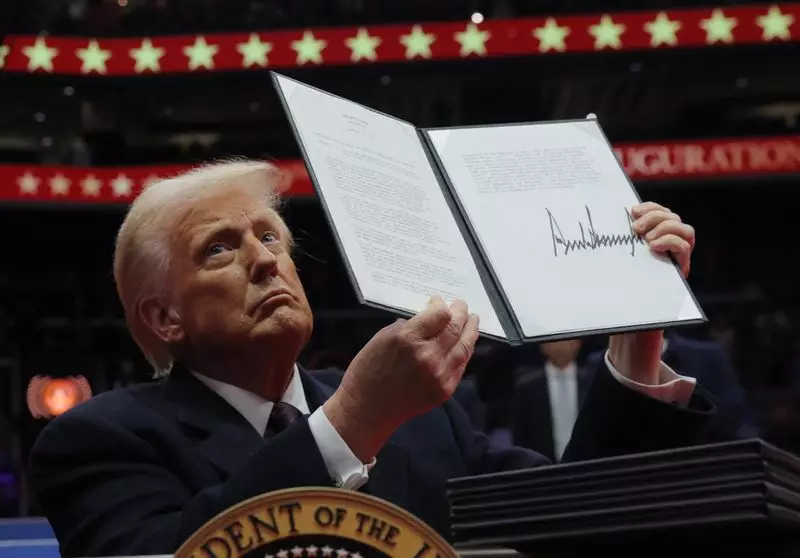In a significant policy shift, President Donald Trump has mandated a comprehensive return to in-person work for federal employees, an initiative unveiled during a rally at Washington’s Capital One Arena. This executive order is poised to undo the widespread acceptance of remote work that gained prominence amid the COVID-19 pandemic. As the nation navigated through unprecedented times, many white-collar workers adapted to remote work, redefining productivity and work-life balance. Trump’s decision to rescind these arrangements reflects not only a desire to restore the traditional work model but also introduces a highly contentious political environment.
Motivations Behind the Executive Order
Critics argue that Trump’s directive may extend beyond a mere preference for physical office dynamics. Allegations have emerged suggesting that this initiative seeks to undermine the integrity of the civil service. Supporters of the administration hint at a strategy aimed at replacing career bureaucrats with political loyalists. Such a move raises concerns about the independence of federal agencies and the potential eroding of institutional knowledge. Trump’s emphasis on returning employees to their duty stations could potentially lead to a workforce purged of dissent, consolidating control over federal operations.
Through a brief declaration shared on the White House website, Trump instructed agency heads to promptly terminate remote work policies and restore full in-person attendance. The language in the order allows for exemptions, which could introduce an element of inconsistency in implementation. Coupled with this return-to-office mandate is a hiring freeze and the establishment of a new advisory body, the Department of Government Efficiency. The role of this body appears to focus on shrinking government operations and streamlining agencies, which proponents argue could enhance efficiency but may inadvertently contribute to job insecurity among federal workers.
Experts are raising alarms about the broader implications of these policies on employee morale and job satisfaction within the federal workforce. The cumulative effect of forced returns, hiring restrictions, and the push for government downsizing may push seasoned employees to seek opportunities elsewhere, exacerbating turnover and creating a vacuum of talent. The atmosphere surrounding federal employment could shift significantly, fostering a culture of fear and compliance rather than innovation and public service.
Overall, Trump’s mandate not only disrupts the established norms of remote work but also signals a notable departure from the collaborative spirit that characterized the federal workforce’s evolution during the pandemic. As government employees grapple with the implications of this directive, the broader political landscape will inevitably engage in a debate over the values underpinning public service. This initiative may further polarize opinions surrounding federal employment, making it essential for stakeholders to assess its ramifications critically. The balance between efficiency and employee well-being remains a pivotal conversation as the nation confronts these new realities.

